Pollinator paradise created along the River Great Ouse
Over the last 18 months, the Environment Agency's Waterways team has been working hard to create a pollinator paradise along the River Great Ouse.
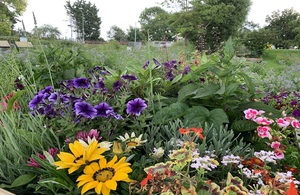
A colourful array of different wildflowers is shown against green foliage.
Biodiversity and boaters are benefiting from wildflowers, bird boxes, bee hives, bee hotels and shrubbery, which have been installed along the river.
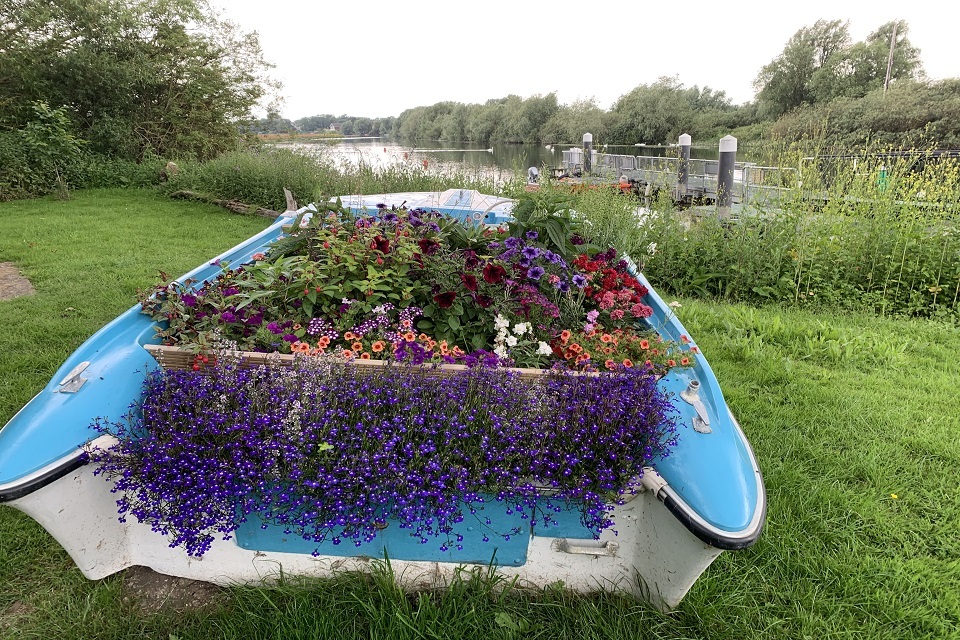
A rowing boat, pictured from behind, sits on a grassy bank near the river. The boat is filled with a colourful array of flowers, which spill over the sides of the boat. The river can be seen in the background.
In total, the Environment Agency has introduced:
- 7,000 bulbs
- 1,000 metres squared of wildflower strips - the equivalent of 4 tennis courts
- 600 metres of native hedging
- 120 lavender plants
- 60 bird boxes
- a bee hive with more than 40,000 bees
- 2 large bee hotels
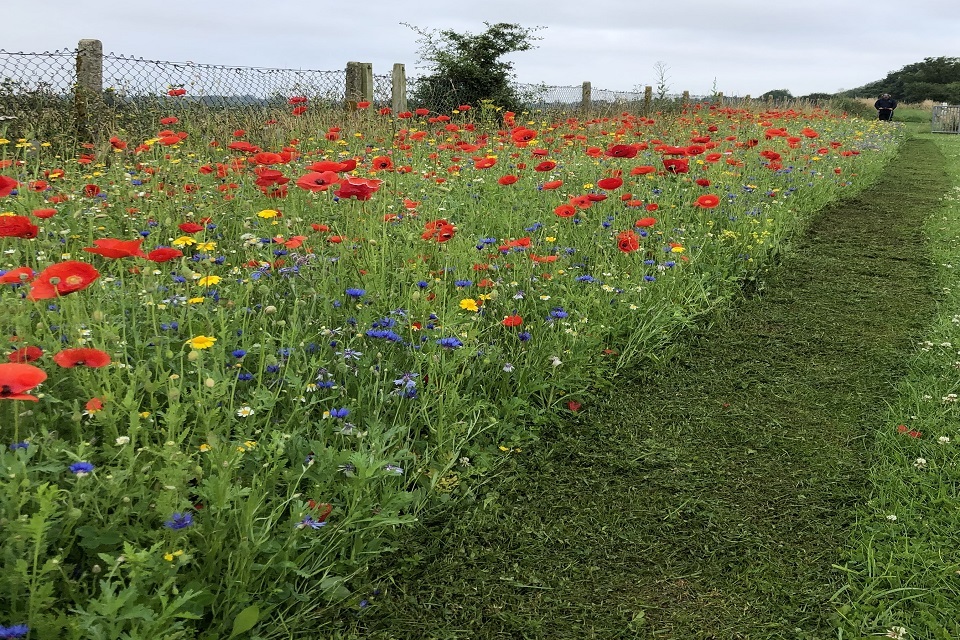
A long border of colourful wildflowers including red poppies stretches off into the distance.
Boaters and passers-by have written to the Environment Agency to compliment the work.
Ian Wilson, a leisure boater who has cruised England, said:
The wildflowers at your locks on the River Great Ouse look amazing and have increased my enjoyment of cruising the river.
Besides being so beautiful and calming, they are a great contribution for butterflies and other insects.
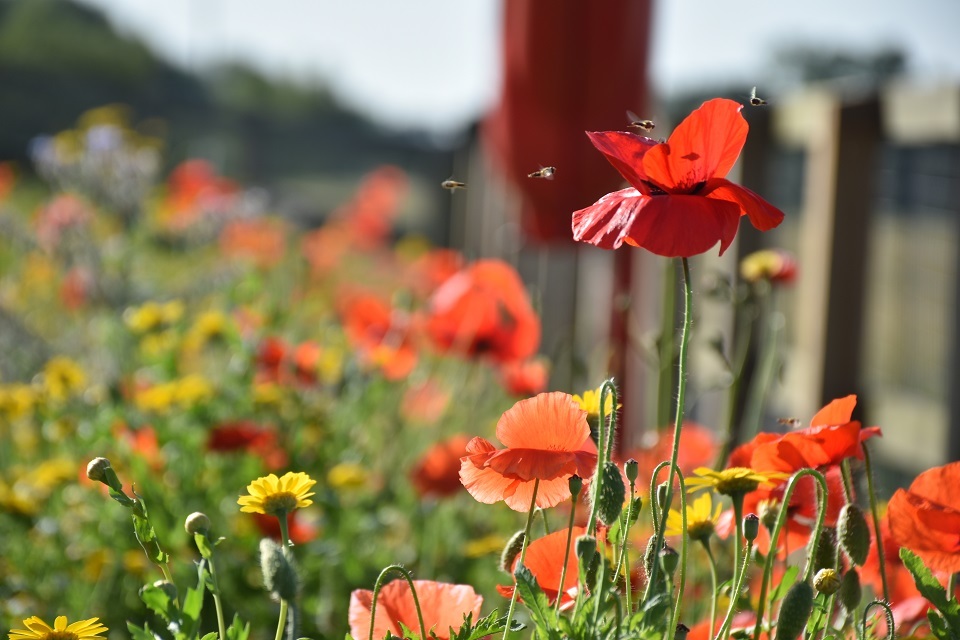
A close up view of wildflowers shows hoverflies on and near a red poppy planted. Further yellow flowers are in the background, out of focus.
Matt Yallop, Waterways Workforce manager for the Environment Agency, said:
I am really proud of my team’s hard work and commitment to help increase the bee and bird population on our navigation sites.
It’s very pleasing to see people enjoying the explosion of colour and increased wildlife. We have reduced the areas of grass we cut to encourage nature, and this also helps lower the overall river maintenance costs.
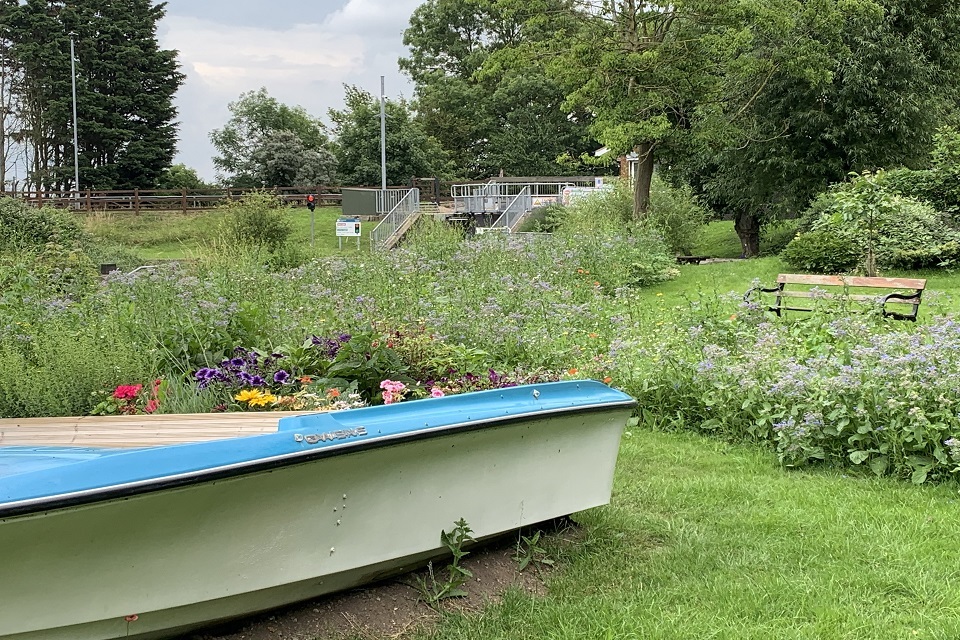
A side view of a rowing boat sitting on grass. The boat is filled with flowers. Around it is grass and more wildflowers in an open green space with a bench.
Dick Milthorp, a member of the Waterways Workforce who has been instrumental to this project, said:
Our work doesn’t end here. We are planning to add more wildflower strips to Eaton Socon landing stage, Godmanchester and Brownshill. We have also got more hedging to plant as well as bluebells, wild garlic and more.
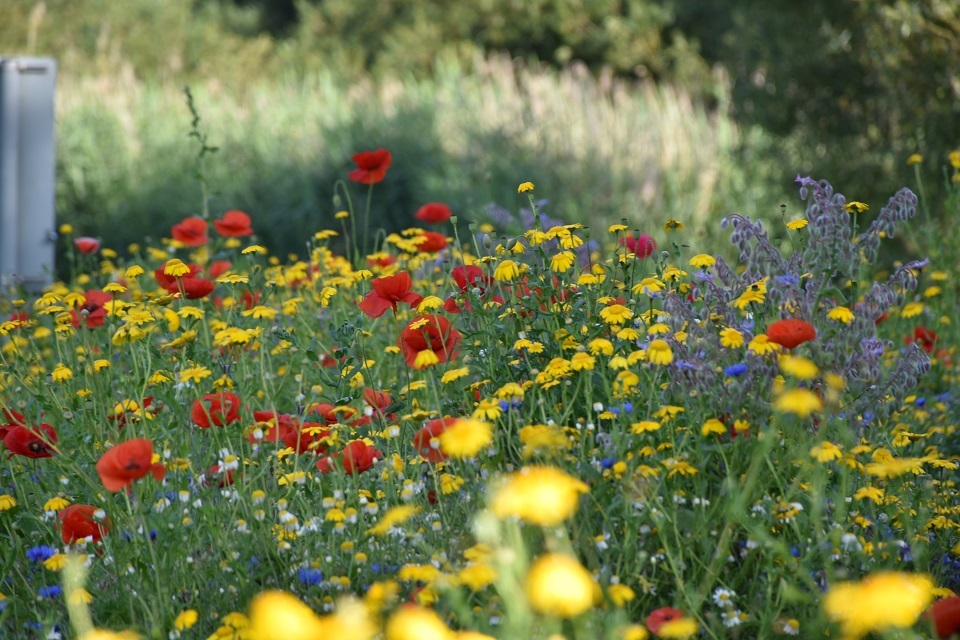
A close up of some of the colourful flowers.
During the autumn the Environment Agency plans to plant wildflowers across approximately 3 acres of the Denver complex of sluices, near Downham Market. The plants will be a combination of flowers suitable for shady and dry conditions.
The work is part of the Environment Agency’s long-term ambition of creating a nation resilient to climate change; healthy air, land and water; green growth and a sustainable future.
On the ground this involves improving more than 4,000 kilometres of river, creating nearly 1,200 hectares of habitat and being on track to be carbon-neutral by 2030.

A bee is shown sitting on a blue wildflower. Around it are more wildflowers.